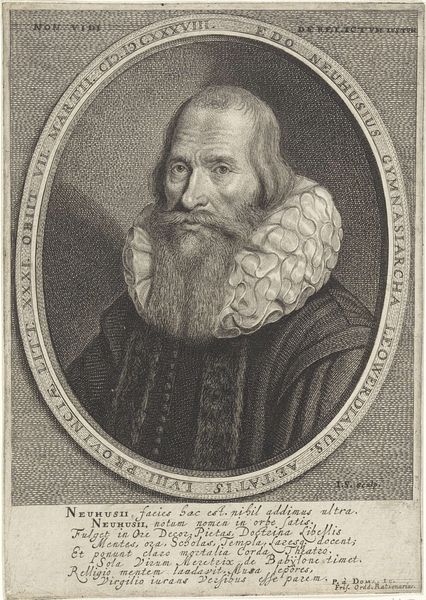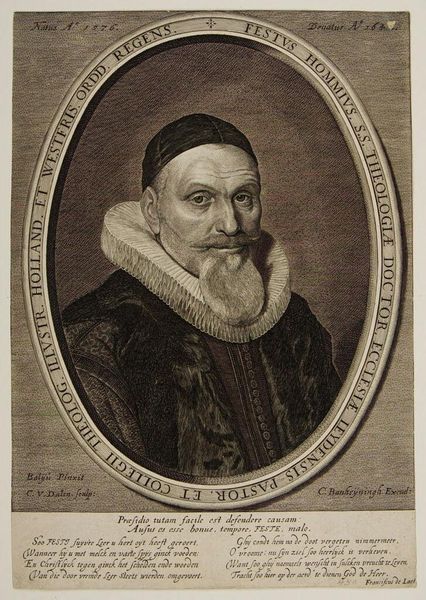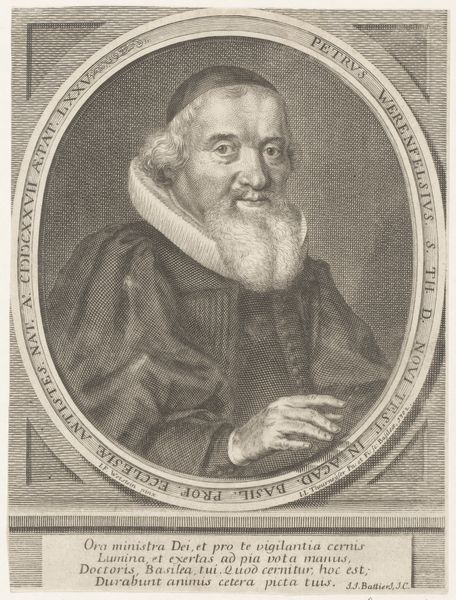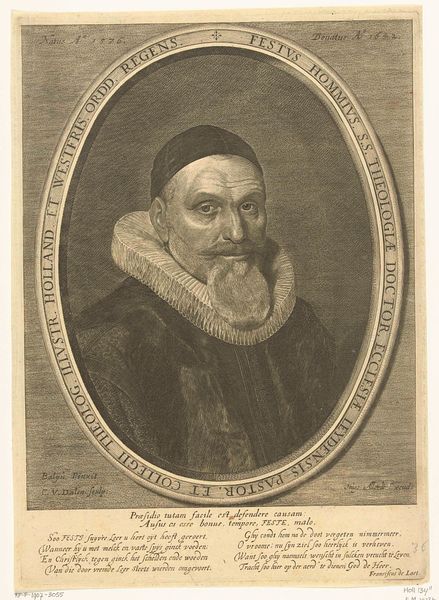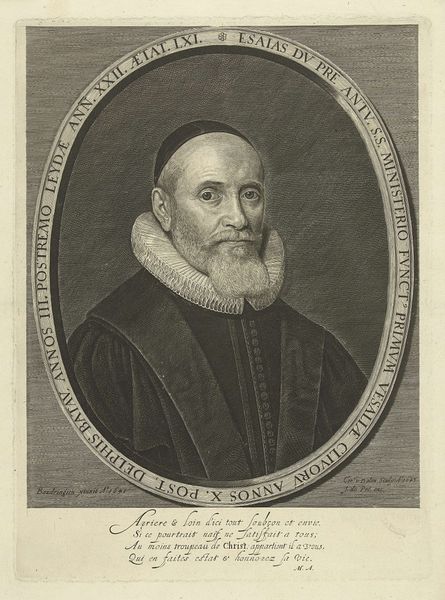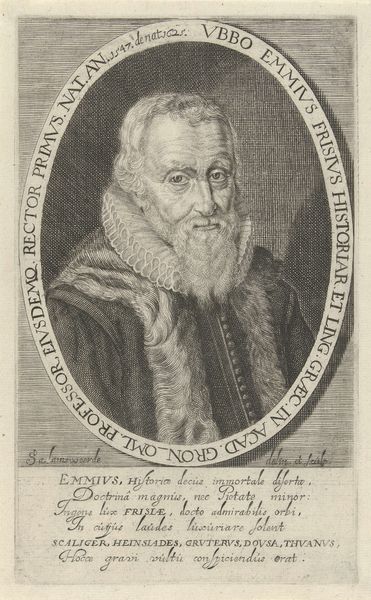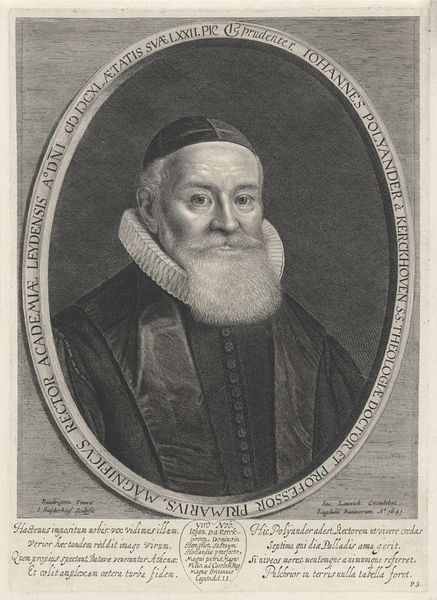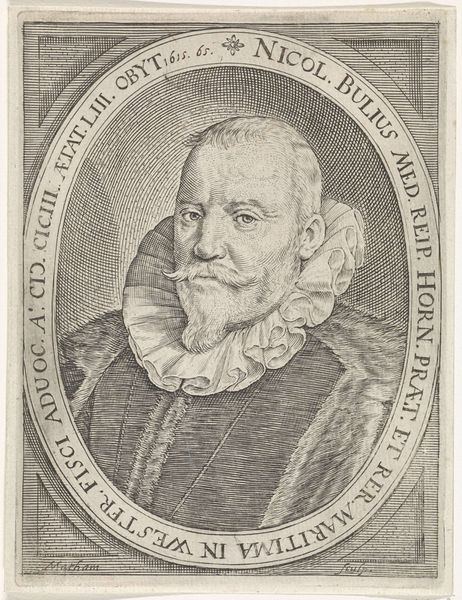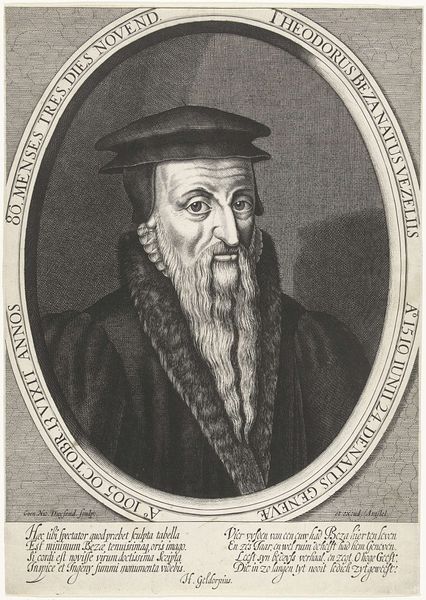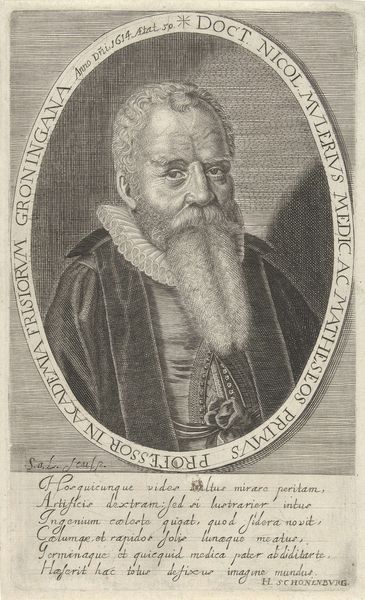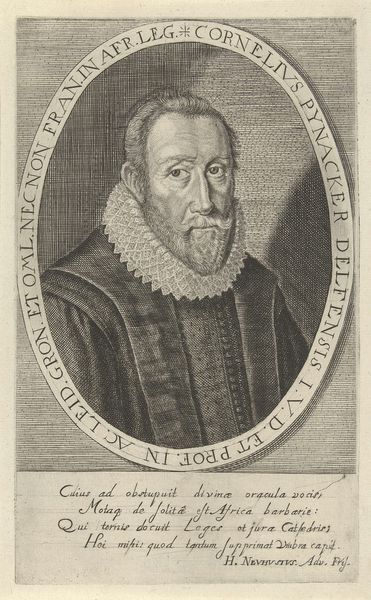
engraving
#
portrait
#
baroque
#
dutch-golden-age
#
history-painting
#
engraving
Dimensions: height 321 mm, width 229 mm
Copyright: Rijks Museum: Open Domain
Curator: Here we have an engraving, "Portret van Rudolph Hegger", attributed to Jonas Suyderhoef, dating sometime between 1656 and 1684. What are your first thoughts on it? Editor: The detail is just striking. The artist’s handling of light and shadow creates a real sense of depth, but there is something quite reserved, maybe even somber, in his expression. I'm getting a sense of the subject being quite contemplative. Curator: That solemnity resonates with me. As a portrait, it certainly captures Hegger's likeness, but beyond that, it feels symbolic. The text inscribed around the oval perimeter proclaims him a pastor, active for 35 years. The date, 1656, marks a key moment within that legacy. Editor: You're right, those inscriptions contextualize him within his time. Being a pastor during that era would imply not just spiritual leadership but a significant role in the community. I imagine he had to navigate social, religious, and political tensions within the broader scope of Dutch history. The inscription suggests a life dedicated to service. It begs the question: Who was he serving? What did he stand for? Curator: Precisely. His ruffled collar, the scholarly garb—these aren't just stylistic choices but visual cues reinforcing his position, the period’s emphasis on religious vocation, and scholarly attainment. And if you look closer, there is a sort of subdued strength or determination there in his face. Editor: The detail in his coat too. It seems almost like he is weighed down by the fabrics that are indicative of his wealth or station, weighed down too perhaps by expectations and his duty to the Church and its patriarchal doctrine. Curator: Absolutely. And this image served as more than just a memento. It reinforces the institution as much as it memorializes an individual. I can almost sense his internal world as a spiritual leader, dealing with religious change. The lines of aging are captured so finely on his face. It carries that sense of responsibility over time, within cultural memory. Editor: Seeing it framed in that way invites me to reconsider this image as part of a bigger puzzle, raising many pertinent issues still present in our world. How can visual imagery become a vital part of our ongoing work to confront history and power dynamics within it? Curator: I agree. And so, by meditating upon such images we begin to see the many possible ways in which it challenges how we see, how we remember, and, ultimately, how we construct identity and meaning itself. Editor: Well said, reminding us of the power in a portrait such as this.
Comments
No comments
Be the first to comment and join the conversation on the ultimate creative platform.
